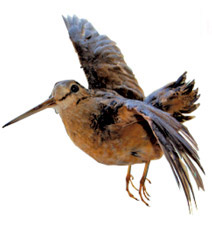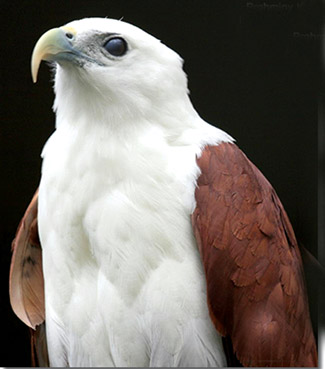|
Multi-shaped beaks:
Useful Tools
Unique among animals due to their feathers, birds have many
attributes which are striking and never fail to fascinate us. Like their
vibrantly coloured feathers,
 their
beaks (also called bills), feet and talons, (sharp claws) are also
striking since they are of various shapes and sizes. their
beaks (also called bills), feet and talons, (sharp claws) are also
striking since they are of various shapes and sizes.
 Even
though all birds have beaks and claws, they are not alike. They differ
from species to species depending on their habits and habitats. Even
though all birds have beaks and claws, they are not alike. They differ
from species to species depending on their habits and habitats.
Beaks, which come in a huge range of colours, shapes and sizes give
us a clue as to a bird’s feeding habits. There are different species of
birds which feed on various types of food. So, their beaks are designed
to aid them in catching and eating their prey.
For example, carnivorous birds like hawks, owls and eagles which are
also known as birds of prey, have very strong beaks shaped like hooks to
tear flesh. Eagles, hawks and falcons generally use their talons to
catch prey, but the beaks come in handy to pluck the feathers of the
captured bird and also tear its flesh into manageable strips for
consumption.The huge bird of prey - the bald eagle uses its beak to tear
up the fish it catches.
Many wading birds such as the curlew have long, curved bills which
are ideal for probing for small creatures in their burrows in the soft,
estuary mud. It is said that the tips of the curlew’s beak are very
sensitive, enabling it to feel the creatures hidden in the mud. Birds
such as herons, kingfishers and storks have straight, long and pointed
beaks which helps them to catch fish from the river and ponds. Ducks
have very short and flat beaks with tiny holes called shovels at the
sides.
These help them to dig the mud near ponds and pick up worms, insects
and water plants. As the beaks have strainers along the edges, water and
mud taken in while picking the food are drained out through these
strainers, leaving only the tiny worms, insects and plants in the mouth.
A bird called anhinga has a long, stiletto-like beak which it uses to
stab its prey. The bird stalks fish underwater with its snake-like neck
poised to strike at the prey. The moment a fish comes within its range,
it spears it with its long beak.
A parrot has a curved or hooked beak to crack nuts and hard fruits.
Parrots are able to eat even unripe fruits like mangoes and guavas
because of this type of beak. Parrots also use their beaks to climb.
Swallows do not have large beaks. Their beaks are short and they do
not use them to catch prey or peck at food. They have very sticky mouths
and when flying about, the birds keep their beaks open. They catch tiny
flying insects and flies which stick inside their mouth, while flying.
Birds such as hoopoes have long and slender beaks while sunbirds have
thin, long and pointed beaks. The beaks help sunbirds to suck nectar or
juice from fruits and flowers.
Some birds have specialised beaks which they use like a chisel.
Woodpeckers are birds with such specialised beaks. Their strong and
heavy beaks are also shaped like chisels. They use their beaks to drill
holes in the trunks of trees and also to pick up insects.
Did you know that when drilling, a woodpecker’s head moves very
rapidly, up to 21km/h in the case of a red-headed woodpecker? However,
their bills are equipped with a special shock absorber that prevents
injury to the brain.

Humming birds which are the smallest of our feathered friends also
have unusual beaks. They use their long proboscis to suck up nectar. The
beaks of birds like sparrows and cardinals are cone-shaped and are
adapted for gathering and cracking seeds.
So, now you know at least what shape some of the beaks of birds are
and what useful tools they are, for feeding. But birds don’t use their
beaks only for food. They are also vital tools for preening their
feathers, to keep them in working order. The beaks are also used to
carry material and to construct specialised nests. Although feet are
often used for preening, the beak is the more versatile tool the bird
has. It is used to smooth the feathers and to coat them with a water
resistant oil produced by a special gland.
The beak also comes in handy to pick out tiny parasites such as ticks
and lice which drink the bird’s blood.
Facts and pix : Internet
Next week : Feet and talons..
**********
Types of beaks
Description Function
Short and rounded - multipurpose, eating
insects and seeds
Spear shaped - spearing fish
Chisel shaped, flat and pointed - drilling for insects
Flat and square-shaped - straining algae
Long and fat, like a scoop - scooping up fish
Hooked - catching and tearing
prey
Long and tubular - sucking nectar from
flowers
Fast facts
* A pelican has a pouch on the bottom section of its beak which is
baggy and helps the bird to scoop up a mouthful of water and fish. It
later drains off the water retainig the fish.
* The Australian pelican has the longest beak in the world.It is
about 34-47 cm (13.4-18.5 inches)in length.

* The beak of an eagle is perfectly designed for ripping of flesh
from the bones of the prey it catches.
* Different shaped bills serve different ecological purposes; short
thin bills for insect eaters, short thick bills for seed eaters, long
thin bills can be for probing flowers for nectar or probing soft mud for
worms and shellfish and strong hooked bills for tearing meat.
* The huge bills of toucans and hornbills are both decorative and
functional. Being light, as well as long they allow the birds to pick
fruit from the thin ends of branches that cannot support the birds
weight.
* The top and bottom parts of a bird's bill are called mandibles.The
upper bill or mandible is also called the maxilla.
* All birds have their nostrils at the basal end of the top mandible,
except for the New Zealand Kiwi where they are at the tip.
* The edges of the bill are especially hard and sharp and are called
'tomia', singular 'tomium'. The part where the two mandibles meet at the
hinge of the bill is called the 'Commissure'
* Birds' bills continue to grow throughout the birds’ lives, this is
necessary to replace the wearing that inevitably occurs at the tips.
* When birds open their mouths it is the lower jaw that does most of
the moving. Most birds can move the upper jaw to some extent though only
in a few groups like the parrots it is anywhere near as flexible as the
lower jaw.
* Puffins have an extra bone in their jaws which allows them to open
their bill and to keep both mandibles parallel. This allows them to hold
a whole row of fish without the ones near the tip falling out.
* Flamingos use their bills as a sieve and plate just like a baleen
whales to extract small algal filaments from the water.
* Birds' bills are very sensitive, especially at the tips.
* Curlews can open the tips of their bills deep in the mud without
getting a mouthful of mud.
* The Sword-billed Hummingbird (Ensifera ensifera) has a bill longer
than the rest of its body.
* Skimmers (Anhingidae) have their lower mandibles larger than the
top ones. They fly with the lower mandible in the water and use it to
flip fish up into the air where they can catch them.
* The bill of the Red-headed Woodpecker (Melanerpes erythrocephalus)
hits the bark of a tree at about 21 km/h or 13 mph. The birds' brain
experiences a deceleration of about 10G every time this happens.
The Black Woodpecker, (Dryocopus martius), strikes with its bill
against a tree between 8 and 12 thousand times a day.
Courtesy: Internet
|

